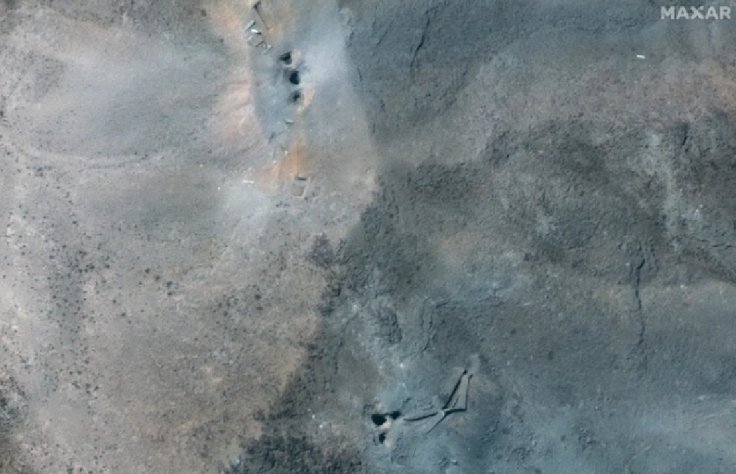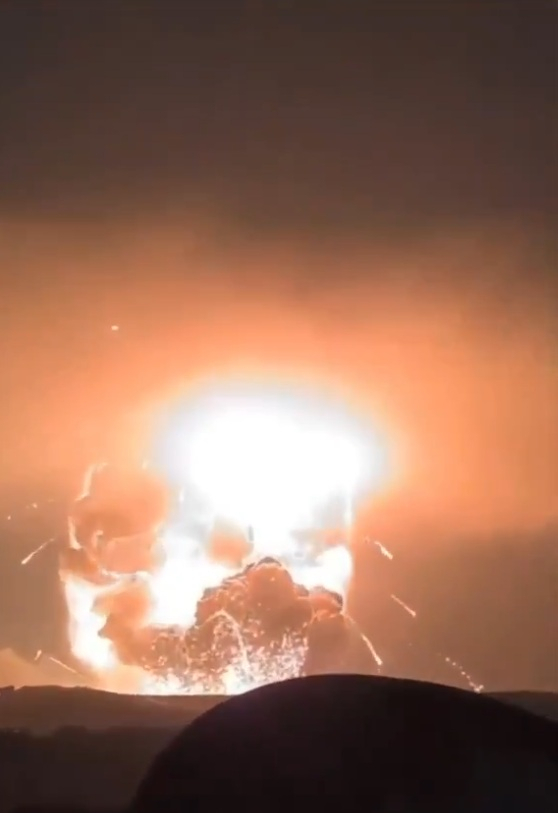The first satellite images from Iran's Fordow nuclear enrichment site show that a part of the mountain shielding the facility was entirely destroyed by U.S. bunker buster bomb strikes on Saturday. Possible impact points and debris was visible after President Trump's surprise overnight assault using B-2 stealth bombers, images taken by Maxar Technologies show.
Sections of the previously brown mountainside now appear gray, with the landscape significantly changed due to the detonation of 14 Massive Ordnance Penetrator (MOP) bombs, each weighing not less than 30,000 pounds. The chilling images also reveal a haze of light gray smoke lingering above the site, located around 100 miles south of Iran's capital Tehran.
Wiped Out Completely

Other high-resolution satellite images indicate that Iran had sealed the tunnel entrances at the Fordow facility ahead of the strike. A network of roads leads to the site, with earlier images showing numerous vehicles gathered near the access points.
The Fordow facility sustained "major damage," a second site in Esfahan was also heavily hit, and the Natanz nuclear facility was completely destroyed, according to sources cited by the Jerusalem Post on Sunday.

As of now, Tehran has not released an official assessment of the damage.
According to Iranian state television, the Fordow facility was reportedly evacuated some time prior to the attack.
"The enriched uranium reserves had been transferred from the nuclear centers and there are no materials left there that, if targeted, would cause radiation and be harmful to our compatriots," Hassan Abedini, deputy political head of Iran's state broadcaster, said following the attack, according to Reuters.
Total Devastation
Military sources say that since Fordow is located deep beneath a mountain near the city of Qom, the strategy used by the U.S. and Israel was aimed at triggering a collapse or ground subsidence over the facility.

Spanning roughly 54,000 square feet, the site housed around 3,000 centrifuges.

Heather Williams from the Center for Strategic and International Studies gave a detailed explanation saying that Israel did not possess the necessary firepower to destroy Fordow on its own in the short term, which led to the request for the U.S. to deploy the GBU-57 bomb using B-2 bombers.
The GBU-57 is a 30,000-pound bunker-busting bomb capable of penetrating up to 200 feet underground before detonating.
Originally developed in the early 2000s, the weapon is designed to break through layers of rock or concrete before its warhead goes off.








